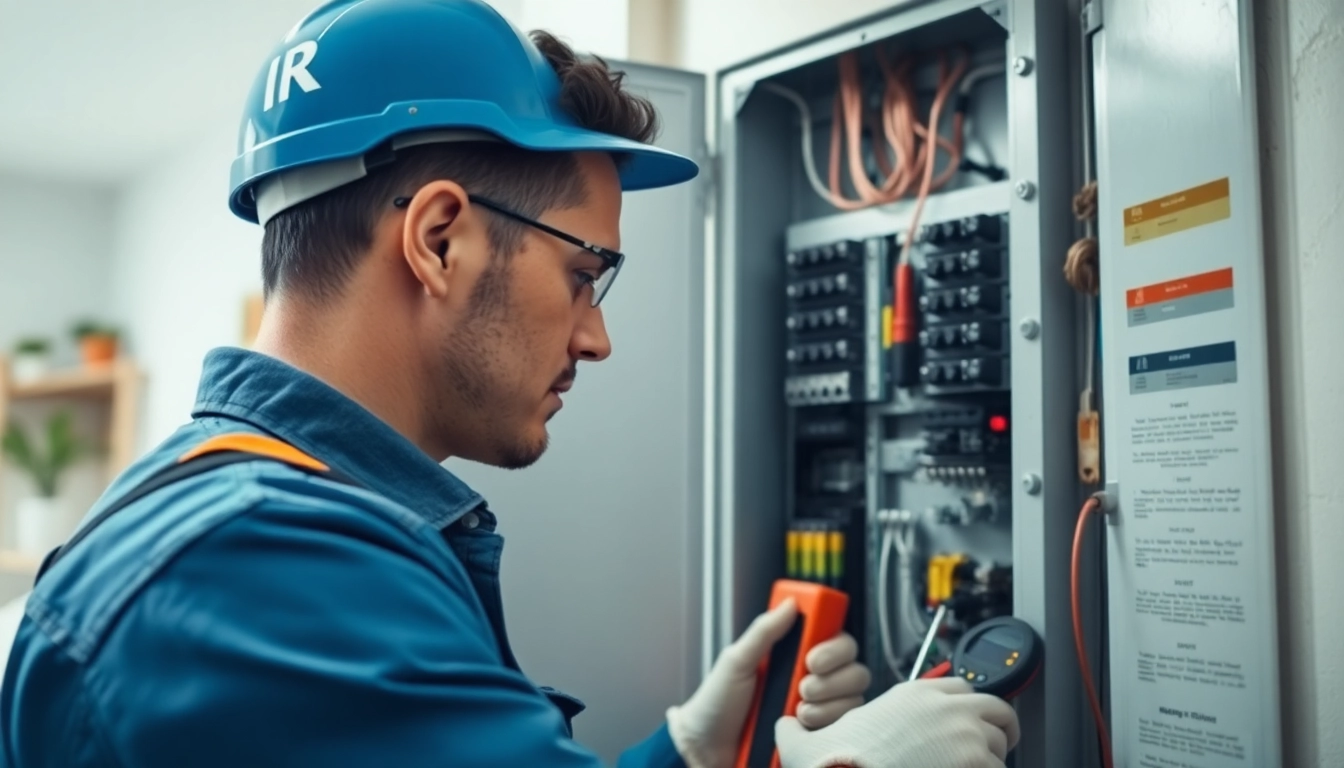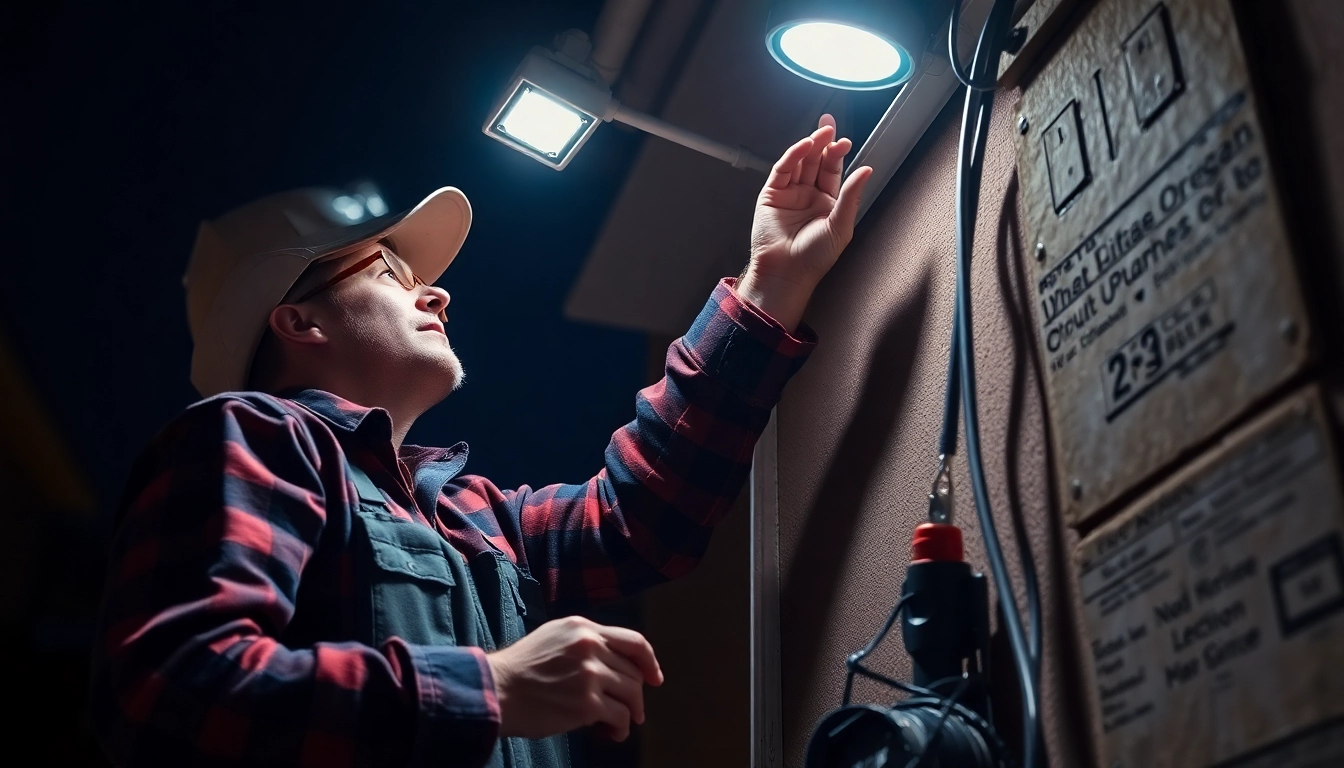Understanding Electrical Panels
Electrical panels, often referred to as breaker boxes or service panels, play a crucial role in the electrical infrastructure of any home. They act as the central hub for electrical distribution, receiving electrical energy from the utility company and distributing it throughout the property. Understanding when to upgrade an electrical panel is vital, especially for homeowners in Clearwater. This article will delve into the essentials of electrical panels, the signs that indicate a need for an upgrade, the benefits of upgrading, how to choose the right panel, and what to expect during the upgrade process. For comprehensive insights, consider referring to our Electrical Panel Clearwater guide.
What is an Electrical Panel?
An electrical panel is a metal box that houses circuit breakers or fuses. It is responsible for splitting the electrical power feed from the utility company into various circuits throughout a home or commercial building. Each circuit is protected by a breaker, which automatically switches off to prevent overloads or short-circuits, thereby ensuring the safety of the electrical system. Electrical panels vary in size and capacity, depending on the electrical needs of the property they serve.
Components of Electrical Panels
Understanding the components of an electrical panel can help homeowners appreciate its functionality. Here are the key components:
- Main Breaker: The primary switch that controls the entire panel and disconnects power from all circuits.
- Circuit Breakers: Individual switches that protect specific circuits. They trip to prevent circuit overloads.
- Bus Bars: Conductive metal bars that distribute electrical power to the circuit breakers.
- Ground Bar: A metal bar connected to the earth to ensure safety and reduce the risk of electrical shock.
- Neutral Bar: Connects the neutral wires of each circuit, allowing proper electrical flow.
Importance of Upgrading Electrical Panels
Upgrading your electrical panel is not merely a matter of convenience; it significantly impacts safety, efficiency, and even property value. An outdated panel can pose serious risks, including electrical fires or power outages. With the increasing number of electronic devices in households today, many homes have outgrown their original electrical systems.
Signs Your Electrical Panel Needs an Upgrade
Recognizing the signs that indicate your electrical panel may need an upgrade is essential for homeowners. Here are some critical indicators:
Frequent Circuit Breaker Trips
If you find yourself frequently resetting breakers, it’s a clear sign of an underlying issue. Circuit breaker trips may signal that the panel is overloaded, or the electrical system is failing to meet your household’s energy demands.
Age of the Panel
Most electrical panels have a lifespan of about 20 to 30 years. If your panel is approaching or exceeding this range, it may no longer be equipped to handle current electrical loads efficiently or safely.
Signs of Overloading
Physical signs such as scorch marks, flickering lights, or a burning smell around the panel indicate that it is struggling to manage energy consumption and may require an upgrade.
Benefits of Upgrading Electrical Panels
Investing in an upgraded electrical panel can yield numerous benefits for homeowners. Here are some of the most significant advantages:
Improved Safety Features
Newer electrical panels come with updated safety features, providing better protection against overloads and electrical fires. This is especially important in homes with outdated wiring systems.
Increased Home Value
Upgrading your electrical panel can significantly boost the value of your property. Buyers are often more attracted to homes with modern electrical systems, as it assures them of safety and reliability.
Energy Efficiency Savings
New panels are designed to enhance energy efficiency, which can lead to lower utility bills. They can better handle the load of high-efficiency appliances and reduce energy waste.
Choosing the Right Electrical Panel for Your Home
When it comes to selecting the appropriate electrical panel for your home in Clearwater, several factors must be considered to ensure it meets your needs:
Assessing Your Home’s Electrical Needs
Evaluate the electrical consumption in your home by listing all electronic devices and appliances you use. This calculation will help you determine the amperage requirements for your new panel.
Types of Electrical Panels Available
There are various types of electrical panels, including:
- Standard Panels: Commonly found in homes, typically rated for 100 to 200 amps.
- Sub-panels: Supplementary panels that provide power to specific areas or appliances within the home.
- Smart Panels: Modern advancements that offer real-time monitoring and improved integration with home automation systems.
Consulting with Licensed Electricians in Clearwater
It’s essential to consult with licensed electricians who are familiar with local codes and regulations. They can recommend the best system tailored to your household’s electrical requirements and handle the installation professionally.
The Upgrade Process: What to Expect
Embarking on an electrical panel upgrade involves several key steps. Understanding these will prepare you for the process:
Initial Assessment and Planning
The electrician will begin with a thorough assessment of your current electrical panel and overall system. This includes checking wiring, load calculations, and determining your specific electrical needs. This planning phase is crucial for ensuring that the new panel will adequately serve your home’s requirements.
Installation Steps and Timeline
Installation generally takes a few hours to a full day, depending on the complexity of the job. Steps include:
- Shutting off the main power supply.
- Removing the old panel and disconnecting existing wires.
- Installing the new panel and reconnecting the wiring.
- Conducting tests to ensure everything operates safely and efficiently.
Post-Installation Checks and Maintenance
After installation, the electrician will perform a series of safety checks. Regular maintenance is also recommended, which may include periodic inspections and updates to ensure optimal performance and safety.
Conclusion
Understanding when and why to upgrade your electrical panel is crucial for ensuring your home’s safety and efficiency. By recognizing the signs that your panel may need an upgrade, appreciating the benefits of doing so, and following the right steps to choose and install a new panel, homeowners in Clearwater can enhance their electrical systems effectively. If you are considering an upgrade to your electrical panel, don’t hesitate to consult with trusted professionals to ensure a seamless process.



